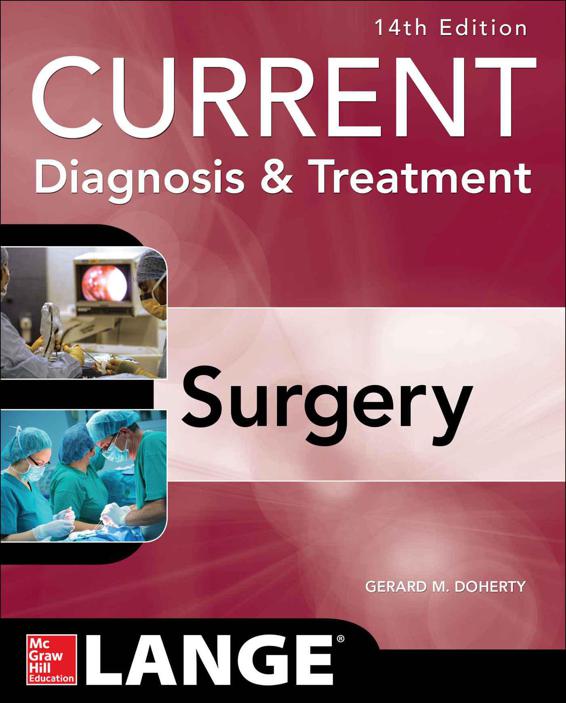Current Diagnosis and Treatment Surgery 14/E

Author:Gerard Doherty [Doherty, Gerard]
Language: eng
Format: epub
Publisher: McGraw-Hill Education
Published: 2015-01-16T08:00:00+00:00
Figure 30–12. Cross-section of the colon depicting the sites where diverticula form. Note that the antimesocolic portion is spared. The longitudinal layer of muscle completely encircles the bowel and is not limited to the taeniae as depicted here.
Epidemiology
In Western countries, 30%-60% of individuals develop diverticula. There is no gender predilection. The prevalence increases with age, although recently there has been an increase in the younger population. Ten percent of patients are affected by age 40 and 65% by age 80. Diverticular disease is more common in Western nations. In Asian countries, there is a predominance of right-sided diverticula. The geologic differences in the incidence of diverticular disease suggest that cultural factors may play an etiologic role. The contribution of a low fiber diet rich in red meat is a commonly cited risk factor but this has not been shown conclusively. Other reported factors include physical inactivity, constipation, increasing age, smoking, obesity, alcohol, and NSAID use. Patients with Ehlers–Danlos and Marfan syndrome, both of which involve abnormal connective tissue, are at increased risk.
Symptoms and Signs
Diverticulosis remains asymptomatic in up to 80% of people and is usually detected incidentally on barium enema x-ray, CT scan, or colonoscopy. A history of constipation is often elicited. An abdominal examination may reveal mild tenderness in the left-lower quadrant, and the left colon is sometimes palpable as a firm tubular structure.
Treatment
Asymptomatic patients with diverticulosis may be given a high-fiber diet, although its role is unclear except as a treatment for constipation. There is no evidence to suggest that avoiding nuts, seeds, or popcorn has a protective effect. In fact, no dietary change has been conclusively shown to treat diverticulosis or prevent its complications, although weight loss, smoking cessation, and a diet low in red meat have been suggested as possibilities. Surgery is not indicated for uncomplicated diverticulosis.
Prognosis
The natural history of diverticulosis has not been defined. Complications of diverticulosis including diverticulitis, hemorrhage, stricture, and fistula formation occur in approximately 20% of patients with diverticulosis. Because these estimates rely on patients with known diverticulosis, the incidence of complications in the general population (who have undiagnosed, asymptomatic diverticulosis) may be much lower. About 75% of patients who present with complications of diverticular disease report no prior colonic symptoms.
Download
This site does not store any files on its server. We only index and link to content provided by other sites. Please contact the content providers to delete copyright contents if any and email us, we'll remove relevant links or contents immediately.
| Anesthesiology | Colon & Rectal |
| General Surgery | Laparoscopic & Robotic |
| Neurosurgery | Ophthalmology |
| Oral & Maxillofacial | Orthopedics |
| Otolaryngology | Plastic |
| Thoracic & Vascular | Transplants |
| Trauma |
Periodization Training for Sports by Tudor Bompa(8173)
Why We Sleep: Unlocking the Power of Sleep and Dreams by Matthew Walker(6620)
Paper Towns by Green John(5092)
The Immortal Life of Henrietta Lacks by Rebecca Skloot(4528)
The Sports Rules Book by Human Kinetics(4299)
Dynamic Alignment Through Imagery by Eric Franklin(4119)
ACSM's Complete Guide to Fitness & Health by ACSM(3990)
Kaplan MCAT Organic Chemistry Review: Created for MCAT 2015 (Kaplan Test Prep) by Kaplan(3940)
Introduction to Kinesiology by Shirl J. Hoffman(3726)
Livewired by David Eagleman(3686)
The Death of the Heart by Elizabeth Bowen(3554)
The River of Consciousness by Oliver Sacks(3543)
Alchemy and Alchemists by C. J. S. Thompson(3452)
Bad Pharma by Ben Goldacre(3358)
Descartes' Error by Antonio Damasio(3232)
The Emperor of All Maladies: A Biography of Cancer by Siddhartha Mukherjee(3069)
The Gene: An Intimate History by Siddhartha Mukherjee(3050)
The Fate of Rome: Climate, Disease, and the End of an Empire (The Princeton History of the Ancient World) by Kyle Harper(3007)
Kaplan MCAT Behavioral Sciences Review: Created for MCAT 2015 (Kaplan Test Prep) by Kaplan(2941)
